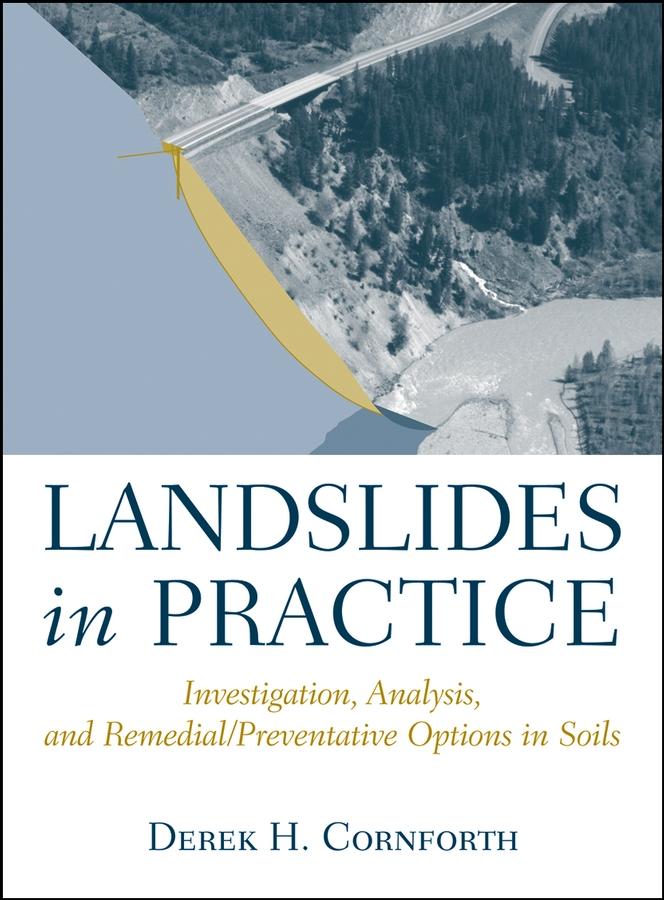
Zustellung: Do, 14.08. - Mi, 20.08.
Versand in 3-4 Wochen
VersandkostenfreiBestellen & in Filiale abholen:
The authoritative guide to landslide investigation, evaluation, and mitigation design Landslides in Practice combines clearly written descriptions and real-life case histories in an authoritative, practical guide to landslide investigation, evaluation, and mitigation design. It presents state-of-the-art investigative techniques and practical information on proven remediation techniques and technologies, including handy checklists for undertaking an initial field examination of a landslide. Landslides in Practice describes the technical tools needed to study landslides-site investigations, soil shear strength properties, and slope stability analyses-and details forty-five methods for stabilizing landslides or preventing instability in soils from occurring. Most remediation techniques are keyed to the ENR Construction Cost Index to help readers determine a rough estimate of the costs associated with the various techniques. To-the-point summaries explain presented techniques without confusing jargon, and dozens of succinct case histories integrated throughout the book serve as useful examples. In addition, twelve expanded case histories illustrate in depth many aspects of the landslide events and remediation strategies covered. Complete with hundreds of informative illustrations, Landslides in Practice is a valuable resource for engineers, geologists, consulting firms, and construction companies, as well as landscape architects, land developers, and trial lawyers in the construction industry.
Inhaltsverzeichnis
Relative Cost of Construction. Metric Conversions. About This Book. About the Author. Preface. Acknowledgments. PART A: INVESTIGATIONS AND ANALYSES. Chapter 1: Landslides. Chapter 2: Landslide Occurrences. Chapter 3: Field Investigations. Chapter 4: Inclinometers and Piezometers. Chapter 5: Groundwater. Chapter 6: Laboratory Shear Strength Measurements on Soils. Chapter 7: Properties of Sands and Other Cohesionless Soils. Chapter 8: Properties of Clays and Cohesive Soils. Chapter 9: Slope Stability Analyses. Chapter 10: Stability Margin. Chapter 11: Erosion Control. Chapter 12: Earthquake-Induced Landslides. PART B: REMEDIAL AND PREVENTATIVE OPTIONS. Chapter 13: Common Issues in Remediation. Chapter 14: Alternatives to Full Remediation of a Landslide. Chapter 15: Earthworks. Chapter 16: Erosion Control Measures. Chapter 17: Dewatering Systems. Chapter 18: Seepage Barriers. Chapter 19: Retaining Walls. Chapter 20: Earth Reinforcement Systems. Chapter 21: Liquefaction Mitigation Techniques. Chapter 22: Slip Surface Strengthening. Chapter 23: Landslide Hazard. PART C: SELECTED CASE HISTORIES. Case History 1: Washington Park Reservoirs Slide. Case History 2: Beaver Shoreline Erosion. Case History 3: Bonners Ferry Slide. Case History 4: Washington Park Station Slide. Case History 5: Pelton Park Slide. Case History 6: Pelton Upper Slide. Case History 7: Skagway Marine Slide. Case History 8: Faraday Slide. Case History 9: Goat Lick Slide. Case History 10: Hagg Lake, Slides 4 and 3. Case History 11: Hagg Lake, Slide 6 . Case History 12: Crown Point Highway Rock Slide. References. Credits. Case History Cross-References. Index.
Produktdetails
Erscheinungsdatum
01. Februar 2005
Sprache
englisch
Auflage
1., Auflage
Seitenanzahl
624
Autor/Autorin
Derek Cornforth
Verlag/Hersteller
Produktart
gebunden
Gewicht
1680 g
Größe (L/B/H)
289/223/37 mm
ISBN
9780471678168
Pressestimmen
"The author is to be congratulated on writing a book that addresses the needs of practice, in manner that is both informative and precise." ( Geotechnical News , Vol 23 (2) June 2005)
Bewertungen
0 Bewertungen
Es wurden noch keine Bewertungen abgegeben. Schreiben Sie die erste Bewertung zu "Landslides in Practice" und helfen Sie damit anderen bei der Kaufentscheidung.









